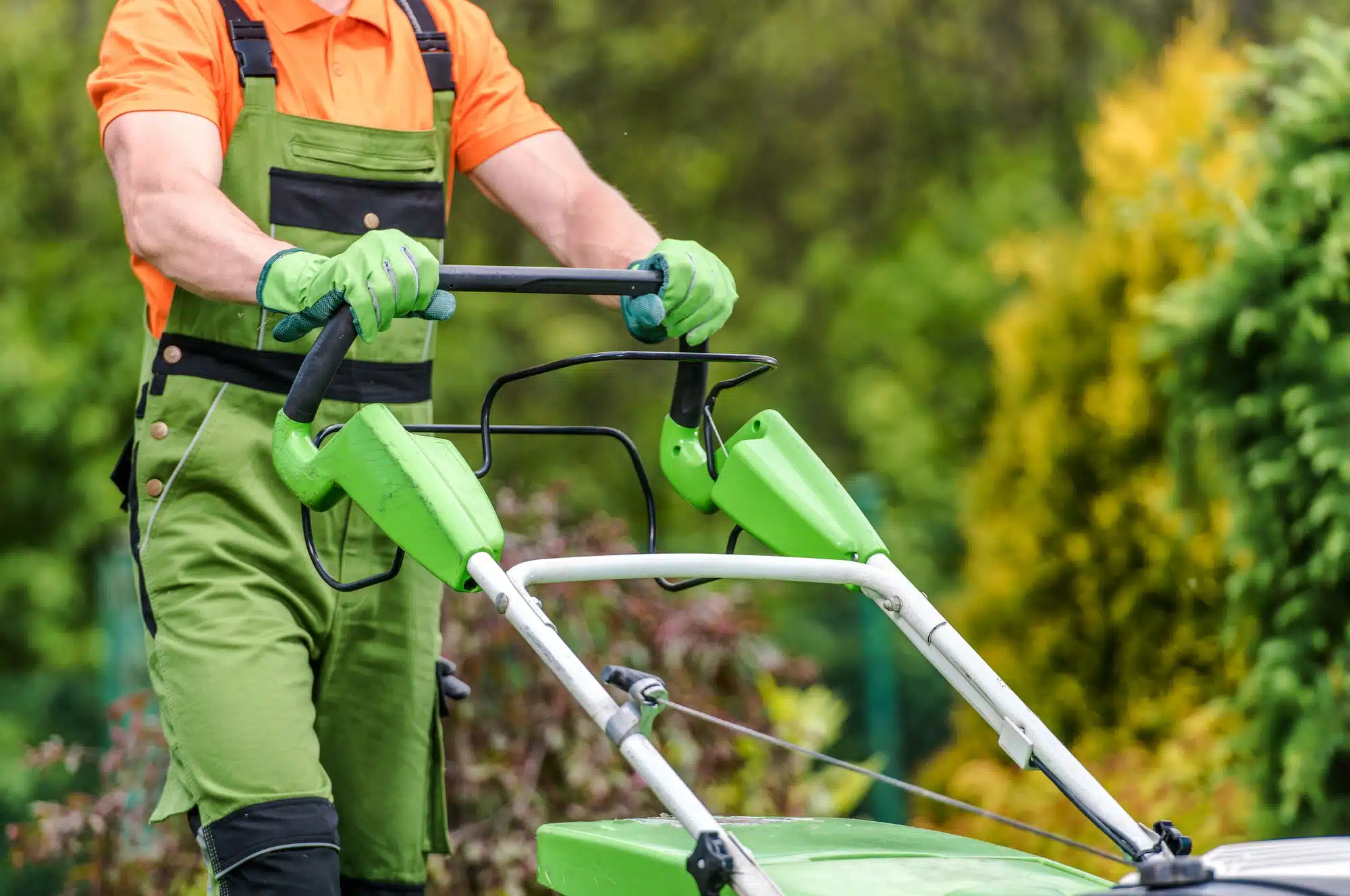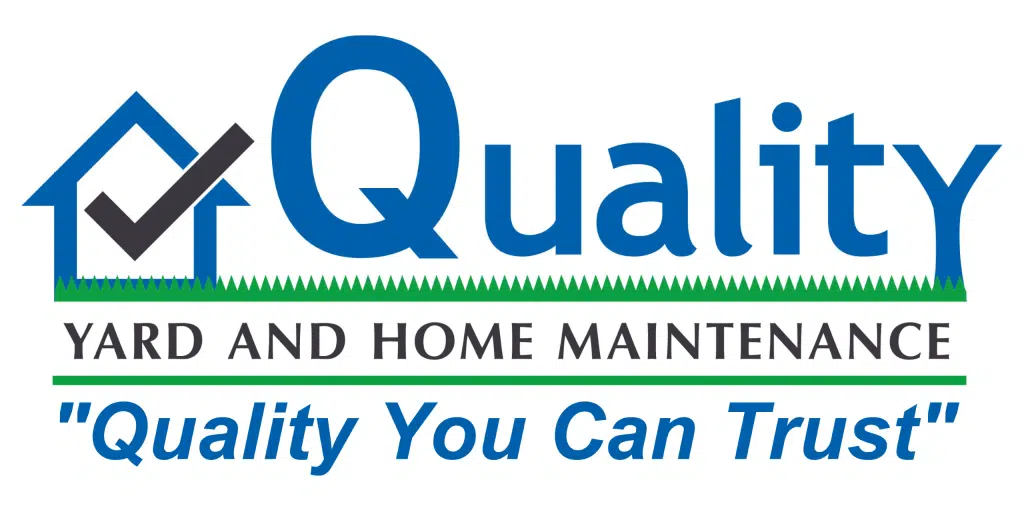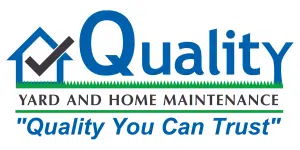PROFESSIONAL LAWN CARE AT AFFORDABLE PRICES
Lawn Care FAQ
As professional lawn care specialists, we get a lot of questions. We’ve compiled many of those questions, along with the answers, below.
Of course, the BEST way to get your questions answered is to connect with our lawn advisors and have them analyze your lawn and provide a quote for services to get it looking it’s best. Call us at 614.559.0078 or use the REQUEST A QUOTE button to request a visit.
LAWN CARE FAQ
Frequently Asked Questions
Q: How long does it take to get my lawn healthy?
A: It normally takes at least one full season. Depending on how thin, how many weeds and crabgrass, it may roll into a second year. The goal is to target the fertilizer to the root system so it will thicken up, which results in thick healthy grass. You will see results after 1-2 treatments.
Q: Why is granular fertilizer better than liquid fertilizer?
A: Liquid fertilizer is a quick release fertilizer that gets mostly absorbed into the grass blade and causes surge growth. It does not help thicken the root system very effectively. It is a fraction of the cost to buy and reflects it in the results. The only good thing about liquid fertilizer is profit for the company using it.
Q: Is all granular fertilizer the same?
A: No, even with granular fertilizer you can buy less expensive blends. The factors that go into the quality and price of fertilizer is: balanced fertilizer containing nitrogen, phosphorus, and potassium. You can buy it without one or more of these nutrients. Using slow-release fertilizer helps continued root feeding to thicken roots better than using regular granular fertilizer that is not slow release. Finally, iron in the fertilizer causes a richer, darker green lawn. Each one of these options adds to the cost of the fertilizer, but this is how you get the best looking lawn in the neighborhood.
Q: Can you prevent weeds from coming up?
A: The best control to prevent weeds is a thick healthy lawn which takes a little time. Although we can use Crabgrass Control to prevent weedy grasses, there isn’t a weed control that prevents weeds from growing. So, the first year or two after we kill the initial weeds, more weeds will continue to come back (but will get continuous treatment) until the lawn gets thick. There are also different weeds that come up at different times of the year. For example, there are spring weeds like dandelions, and summer annual weeds like nutsedge. All need dealt with differently and at different times of the year.
Q: Why can’t I mow the lawn low?
A: Mowing low will cause the lawn to stress and stop growing at a normal rate, and leads to an invasion of weeds. It also burns the lawn up (causing brown dormant grass) because it allows the sun to hit the soil and root system of the grass leaving it exposed to the sun. Similar to, if you were to shave your head and go into the hot sun you would get a sunburn on your head. Tall grass shades the soil and root system. If your lawn is growing, then it is improving. If it is dormant during the growing season then it is declining. Also, the higher you mow the deeper the roots grow to support it which results in a thicker, healthier lawn. Usually 3″ to 3-1/2″ is the proper mowing height. Never mow too infrequently which leads to mowing off more than 1/3 of the grass blade and causes yellowing and browning.
Q: When should I seed the lawn?
A: September is the best month of the year to seed. The ground temp drops, we get fall rain and dew in the mornings to help the seed germinate and grow. It also allows the seed plenty of time to fill in and establish before going into a summer drought. Seeding in the spring is not ideal because the crabgrass control will prevent all seed from germinating and killing your grass seed. If the crabgrass control is not applied, then the junk grasses and weeds will fill in and choke out the good grass that you planted. Only in extreme cases is seeding in the spring recommended.
Q: Why should I do a fall aeration?
A: Core aeration helps thicken your lawn by releasing the pressure of the compacted clay soil and allows the root system an easy way to thicken up. It reduces thatch and allows the water, air, and fertilizer to make it directly to the root system when the root system is the most active. You get 80% of your root growth in the fall. Spring aerations are not as effective as fall aerations.
Q: Should I bag my grass clippings?
A: No. Grass clippings are 95% moisture and 5% nutrients. They are beneficial to leave on the lawn. Do they add to my thatch layer? No. Leaving grass clippings on the lawn are not part of the thatch layer at all. Thatch is living grass roots and crowns that are growing above ground instead of growing underground and are bad for the lawn in many ways and will need multiple aerations to correct. If you have any questions, please call or email.
Q: How Often Should My Lawn Be Mowed?
A: At Quality Yard & Home Maintenance, we recommend weekly mowing to maintain your lawn’s health and appearance. This frequency helps manage overgrowth and suppresses weeds, particularly during the rapid growth periods of spring and summer. It’s crucial to keep your mower blades sharp and clean to avoid grass damage. Mowing regularly encourages a denser turf and promotes vigorous growth, which in turn enhances the overall resilience of your lawn against pests and diseases. For varied growth directions and reduced soil compaction, alternate your mowing patterns. If your lawn is notably overgrown, reduce its height gradually, mowing only a third of the height at a time to prevent stress and potential browning. We recommend always keeping your cut height to 3” or higher for the healthiest lawn.
Q: What Height Should My Grass Be?
A: As a rule of thumb, never remove more than one-third of the grass blade in a single mow. Mowing too short can expose your lawn to excess sun, promoting weed invasion and moisture loss. Maintain taller grass in warmer months to enhance moisture retention and chlorophyll production, which shades and cools the soil. Adjust your mower height with the seasons, raising it during hot periods and lowering it a little bit as the weather cools.
Q: How Often Should I Water?
A: Proper hydration is crucial for a healthy lawn. Your grass requires approximately one inch of water per week, whether from rainfall or irrigation. To foster deep root growth and soil health, it’s better to water deeply and infrequently rather than shallow and often. During intense heat, ensure your lawn receives enough water to prevent the roots and soil from drying out, aiming for about six inches of soil penetration.
Q: When is the Best Time to Water?
A: To reduce evaporation and maximize water absorption, water early in the morning or late in the afternoon. Avoid watering in the heat of the day or at night, the latter of which can lead to fungal diseases due to prolonged dampness.
Q: What Type of Grass Do I Have?
A: In Central Ohio, cool-season grasses like fine and tall fescue, perennial ryegrass, and Kentucky bluegrass dominate and require a higher mowing height. These varieties thrive in cooler climates with significant yearly rainfall. For lawns in warmer regions, warm-season grasses like Bermuda and zoysia are more appropriate, flourishing in hot and humid conditions and get mowed at a lower height. Of course, we don’t plant those types of grasses in central Ohio except on golf courses.
Q: When Should I Plant New Grass?
A: The optimal time for seeding or laying sod in cooler climates like Central Ohio is early fall. This timing allows the grass to establish before the onset of winter. Over-seeding, slice seeding or hydroseeding can rejuvenate thin lawns, improving turf density and color.
Q: Is Fertilizer Important?
A: Yes, regular, and proper fertilization is essential for sustaining a lush, healthy lawn. Grass requires several key nutrients that may be deficient in your lawn’s soil. Regular and balanced applications of nitrogen, phosphorus, and potassium in the appropriate ratios will support vigorous growth and root development, helping your lawn withstand environmental stresses.
Q: When is the Best Time to Fertilize?
A: In Central Ohio, a consistent and regular fertilizer program is best. Starting with a spring fertilization that kick-starts growth after the winter, and ending with a winterizer application to prepare the grass for winter dormancy, ensuring it has sufficient nutrients stored and is hearty enough to withstand the winter weather extremes.
Q: Should I Mulch the Grass?
A: Mulching the grass is highly beneficial, not only for aesthetic reasons but also for soil health. Organic mulch and grass clippings enrich the soil as they decompose, whereas inorganic options such as rocks or synthetic materials are suitable for erosion control and difficult terrain.
Q: How Do I Control Weeds?
A: Effective weed management starts with prevention. Apply pre-emergent herbicides in early spring to curb the growth of both broadleaf and grassy weeds, which can rapidly take over a lawn if left unchecked.
Q: How Do I Spot Lawn Diseases?
A: Look out for symptoms like discolored patches, bare spots, or unusual growth patterns. These can indicate fungal diseases, which are common in moist conditions. Proper cultural practices combined with timely fungicidal treatments can manage these issues effectively.
Q: Do I Need Pest Control?
A: Regular maintenance and pest management are crucial for a healthy lawn. An Integrated Pest Management (IPM) approach focuses on preventing problems before they become severe, using safe and effective treatments to maintain a pest-free environment.
Q: Are Pesticides Dangerous?
A: While necessary at times, chemical pesticides can pose risks to the environment and human health if not applied properly. This is why we undergo rigorous training and frequent re-training in proper pesticide handling, storage and application to ensure the utmost safety for our customers.
Q: What are the best types of grass in Central Ohio lawns?
A: In Central Ohio, the most common and best types of grass for lawns include Kentucky Bluegrass, Perennial Ryegrass, Tall Fescue, and Fine Fescue. These varieties are well-suited to the region’s climate and soil conditions.
- Kentucky Bluegrass: This grass type is highly popular in Ohio due to its ability to form a dense, attractive lawn that is durable and long-lasting. It thrives in the cool climates of Ohio and can recover well from environmental stresses and pest damage.
- Perennial Ryegrass: Known for its quick germination rate and ability to establish rapidly, Perennial Ryegrass is ideal for areas that need quick cover. It is often used in sports fields and is mixed with other grass types to enhance a lawn’s durability and aesthetic appeal.
- Tall Fescue: This type of grass is valued for its drought resistance and ability to adapt to various soil types. Tall Fescue’s deep roots make it a strong choice for sustainable lawn practices, particularly in warmer parts of the region.
- Fine Fescue: Ideal for shaded or less fertile areas, Fine Fescue requires less maintenance, making it a good option for low-input lawns. It’s particularly suited to low-traffic areas where aesthetic quality is more important than durability.
These grass types are not only common but also among the best options due to their adaptability to the regional climate and their individual qualities that cater to different lawn care needs.
Q: How much does a lawn treatment program cost?
A: Because we provide a wide variety of services, we always visit your property, measure, assess your lawn’s condition, then provide a written quote by email.
Q: What Areas Do You Service?
A: Our lawn care service area covers the Far East side, the Southeast side, and Northeast Columbus, and its suburbs, out to the Newark area, since we are based in Pataskala. That allows us to limit travel time and maintain fair prices and high quality survice. To find out if we service your location, use our “Request a Quote” form for a quick answer from our friendly customer service team.
Q: What kind of lawn care services do you provide?
A: Quality Yard & Home Maintenance offers a comprehensive range of lawn care services including mowing, fertilizing, weed control, aeration, and more. We also provide grub control and seasonal landscaping solutions tailored to your needs.
We offer professional full service Lawn Care programs including the following services:
- Lawn Fertilizer and Weed Control
- Grub Control
- Aeration
- Pest/Rodent Control
- Mosquito Control
- Guaranteed Slice Seeding
- Hydroseeding
- Mowing and Trimming
- Brush Hogging (Field Mowing)
- Vegetation Control for flower beds, gravel driveways, and around fences and buildings to control overgrowth
- Poison Ivy Control
We will customize your program for your lawn and landscape needs. Call today for details and to request a free quote.
Q: How much do you charge for lawn care services?
A: Pricing for lawn care services is based on the specific needs of your lawn, including its size and the type of services requested. We offer affordable and competitive rates, and you can get a precise quote by contacting us directly.
Q: What kinds of payment do you accept?
A: We accept various forms of payment, including major credit cards, checks, and through financing options available via our partnership with Enhancify (for larger projects)..
Q: Do you provide on-demand service or only scheduled services?
A: We primarily offer scheduled services to ensure consistent and thorough care of your lawn. However, we can accommodate specific requests on a case-by-case basis for on-demand services.
Q: How do I get a quote?
A: You can get a quote by visiting this page and completing out our “Request a Quote” form, or by calling our office directly at 614-559-0078. We’ll visit your property to inspect the condition of your lawn and measure the lot size, all to provide an accurate price based on your lawn’s specific needs.
Q: Are you licensed and insured?
A: Yes, Quality Yard & Home Maintenance is fully licensed and insured, ensuring that all services provided are of high quality and covered for any eventualities for peace of mind. Our team includes many ODA Pesticide Certified Techs, OGIA Landscape Certified Techs, and ISA Certified Arborists, and has had extensive training and re-training in lawn maintenance and care, and proper pesticide application and safety.
Q: What are the benefits of professional lawn and garden maintenance?
A: Professional maintenance helps in maintaining a healthy, vibrant lawn and garden, enhances curb appeal, increases property value, and saves you time and effort that might otherwise be spent on DIY care. Professional care ensures that your lawn and garden get the right treatments at the right times, resulting in a beautiful yard and outdoor space for your home.
Q: Do you guarantee your services?
A: Yes, we have a Money Back guarantee: We will work with you until you are 100% satisfied or refund the amount of any labor charged. Give us 1% of your trust and we’ll earn the other 99%!
Choosing the Right Lawn Care Service
What to Look for in a Service Provider
Choosing the right lawn care service is critical to ensuring the health and beauty of your lawn. When selecting a provider, consider the following key aspects:
- Experience: Look for a company with a proven track record in lawn care. Experienced providers are more likely to understand the unique needs of different lawns and how to address them effectively. We’ve been in business since 2010, and have earned numerous industry certifications to demonstrate our expertise.
- Reputation: Check online reviews, ask for customer testimonials, and talk to neighbors to gauge the reputation of the service provider. A good reputation often indicates reliable and quality service. We have a 4.7 ⭐⭐⭐⭐⭐ Google Rating/147 reviews and 4.9 ⭐⭐⭐⭐⭐ Facebook Rating/90 Reviews. Give us 1% of your trust and we’ll earn the other 99%
- Range of Services: Ensure the company offers a wide range of services that match your lawn care needs. This can include mowing, fertilization, pest control, aeration, and more. A provider that offers comprehensive services can be a convenient choice for all your lawn care needs. Check, check, and check! We offer a complete line of lawn care and landscaping services to keep your home looking beautiful. (And, once you get to know us, you’ll want to take advantage of our other services to help maintain your home).
See below for more details.
Let's Get Started Making a Beautiful Lawn!
Schedule a Visit
Start by requesting a visit from one of our certified lawn care professionals. Use the convenient Request a Quote button here on the website or call (614) 559-0078
We Assess Your Lawn
Our lawn care service begins with a thorough assessment of your lawn to identify its specific needs - determine soil type, grass species, prevalent weeds, and existing lawn conditions.
Get Your Custom Plan
Our Lawn Care Pro will develop a plan for your lawn and email it to you. Call us or email us back and we'll get started on making your lawn look beautiful and healthy once more!
Customer Testimonials




Hire Us
Hire Our World-Class Lawn Care Team
- Request a Quote
- We’ll Assess Your Lawn
- You’ll Receive a Custom Lawn Care Plan




